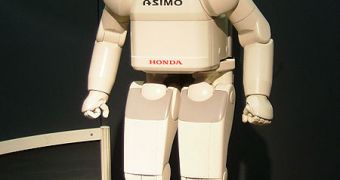Some inventors are notoriously focused more on their robots than they are on those around them, including children and family. What it is about the mechanical creatures that has them so fascinated is easily understandable, seeing how the future of mankind is clear – a world filled with robots and cyborgs to do our bidding. In addition, brain-controlled robotic limbs and body parts are already here, and they could evolve to a point where ethicists would ask whether an entity is a robot or a human.
According to some, this is the question that our children's grandchildren will be asking themselves when they grow up. As bionic prosthetics grow in complexity and capabilities, the future of mankind holds all kinds of promises, one more sci-fi than the other. Actually, the main issue will be if the definition of humans will apply to our predecessors or not. If not, we may need to change the characteristics that make us humans, in order to fit every individual within them.
This concern has been ignited by the emergence of machines, which are even now more and more observable on our streets. We all know about robotic suits, which can be worn over clothes, and that give paraplegics and the paralyzed the ability to not be confined to a wheelchair for the rest of their lives. But who is to say that even healthy persons will not start using them in order to boost their individual capabilities, as in to run faster, lift heavier loads, and so on?
Even at this point, when an inventor appears in the media wearing their own robotic suit, able to walk, climb stairs, or even jump, we get a glimpse of how the future might look like. With developments in artificial intelligence (AI), robots may soon learn to recognize places even if they change, and also to exhibit emotions. Nano-technology-based processors will soon render their “brains” very effective and capable of making associations that now require a large army of programmers to write.
Some of the most incredible achievements so far include a vacuum cleaner that can read human emotions, a fashion robot made in Japan, which has paraded at a Tokyo fashion show, as well as a large number of mechanical bots that already fight alongside humans on the battle field, or even aid surgeons perform complicated operations with a high degree of accuracy.

 14 DAY TRIAL //
14 DAY TRIAL //